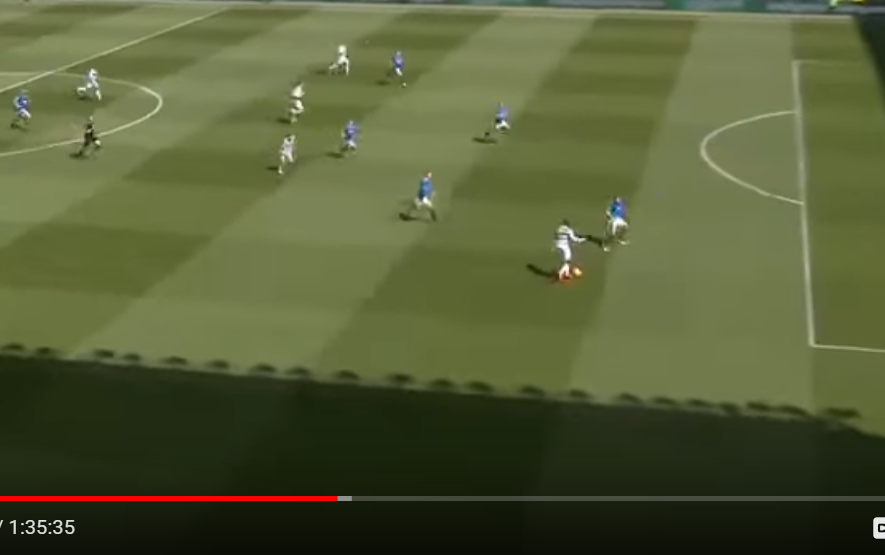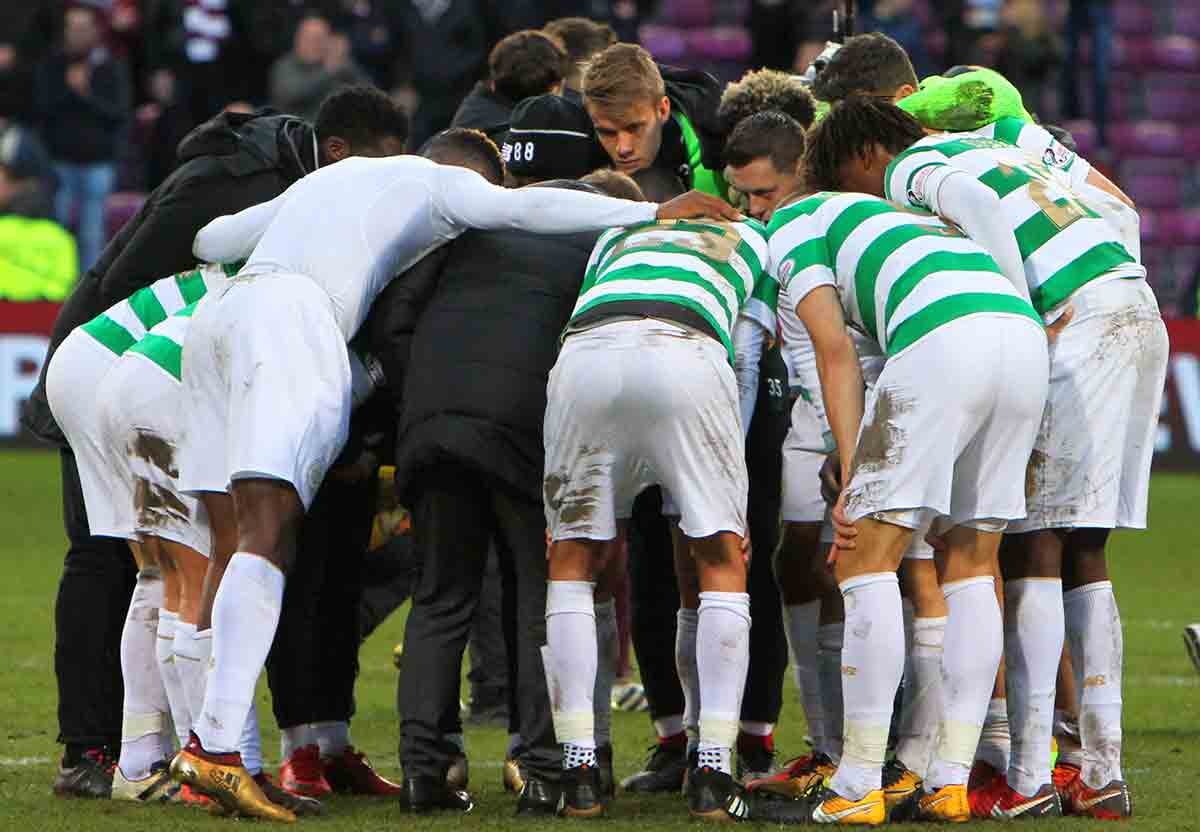Celtic’s 2-0 win over Motherwell on the 19th of May at Hampden was confirmation of the clubs second successive domestic treble. Six trophies won in six under Brendan Rodgers.
Anyone reading this may wonder how you can look for improvements on a second clean sweep of silverware, an unbeaten season and breaking records in the Irishman’s’ first season in charge.
There is no question of the many positives from the two seasons we have seen Rodgers take charge of Celtic. From Kieran Tierney’s continuing development, a debut season Player of the Year award for Scott Sinclair, the emergence of young talented signings like Odsonne Edouard, Olivier Ntcham and Kris Ajer. The new lease of life given to Scott Brown since the 2016 season has been nothing short of incredible.
However, the manager will surely find room for improvement in many of the domestic performances, where teams used a low block or good defensive organisation to deny Celtic.
Problems against good organisation.
The team who probably caused the Champions the most problems were Steve Clarkes resurgent Kilmarnock side, his first test against Brendan Rodgers came in Glasgow which ended in a credible 1-1 draw for the Rugby Park men. It was though, the next time they played in Ayrshire which caused Celtic the most problems, Killie employed a 4-4-2 structure with a focus on pressing from midfield staying compact and blocking central areas and denying Celtic access to build up play. Killies strong defensive shape allowed them to fall back into a deep block and use the front 2 of Eamonn Brophy and Kris Boyd for pressure, only on occasion stepping into a medium block for pressure on the deeper Celtic players. The midfield four of Jones Mulumbu Dicker and McKenzie ensured Kilmarnock always had access to Celtic players in advancing areas.

Here we see Kilmarnock’s 4-2 structure of midfield and strikers, with Boyd and Brophy blocking the passing lines into Scott Brown, Mulumbu with a reasonable distance between Kouassi and Ntcham, and McKenzie who eventually wins the ball from Ajer due to Boyata’s poor pass.
These issues forced Celtic to play down the flanks, allowing balls into central areas with which teams are usually desperately defending or giving off the sense of mass panic Kilmarnock are unusually composed in these situations.
Celtics third defeat of the season saw Hibs apply similar pressure but slightly more advanced in a 2-1 win for the Hibees’, they set up in a 4-4-2 diamond structure, with an emphasis on attacking Celtic down the sides. Their medium to high block forced Celtic back to the goalkeeper on occasion and leading to Hibs opening goal.

Craig Gordons forced high kick to right-sided centre-half Jack Hendry is nodded down to Tom Rogic, who was then dispossessed by Lewis Stevenson, creating an overlap in which Stevenson squares it to Jamie Maclaren for the opening goal.
Possible solutions
In Moussa Dembele and Odsonne Edouard Celtic have players who can hold the ball in the front areas, allowing others to join attacks. This type of solution has been used on more than one occasion by the Celtic boss, citing Lustig’s long range pass to Dembele in the right half space to create an opening for Tom Rogic in the Scottish Cup Semi Final. Some may recall a carbon copy of this in the previous year’s semi-final, for Dembele to set up Callum McGregor, against the same opposition.
This type of long pass from the right fullback or right-sided centre-back is something Celtic can use to break pressing lines or defensive organisation, along with using Craig Gordon as a free man to break down man marking systems in Scotland. This would allow Celtic to use play through opponents pressing scheme with proper distribution and link up play. The right-sided longer attacks are the opposite to what is preferred down the left, with the Tierney/Sinclair combination play being particularly useful, and more recently the Tierney/McGregor link up in their 3-4-2-1 structure.
Something we have seen of the Hoops under Rodgers has been his ability to use opponents marking schemes against them, pulling players away from positions and quickly hurting them with their vast attacking players.
Rodgers’ Flexibility
Something I always remember from watching Swansea and Liverpool under Brendan Rodgers’ was his flexibility with shape and his in-game management. He used a 4-2-3-1/4-3-3 Fluid system to lead Celtic to an unbeaten domestic treble in his first season, however, there were occasional flirts with a back three.
The first time we saw the 3-4-2-1 structure exploit an opponent to great effect was a 3-0 win at Aberdeen in October, using Tierney and Forrest as high wing backs. Scott Brown becomes the defensive base, alongside Olivier Ntcham and allows Tom Rogic and Callum McGregor to support the lone striker from the sides and the ten space.
The effectiveness of this structure is shown in the stats that Forrest makes 65 key passes per game, and McGregor 59 key passes. Kieran Tierney on 44 and Tom Rogic on 37, indicating that the players in more advanced areas for Celtic are incredibly effective in this system.
Effective pressing
Celtics effective press v Rangers in the 5-0 win, three players press Windass, one in his passing lane and eventually Ajer wins it to set up a counter


From Ajer winning the ball, Forrest feeds it to Edouard, who has then four players in support but finishes on his own to make it 2-0.
Conclusion
Celtic’s strengths are in the manager’s football concepts, the players at his disposal and how they can take teams apart with their attacking arsenal, ball playing players and speed.
Rodgers will look to areas such as effective pressing and numerical superiority to win games against more open teams but will have to find ways to open up slightly more organised sides, such as Kilmarnock, who are unusually well structured for a Scottish team. Also, teams who man mark effectively, such as Aberdeen in the 2017 Scottish Cup Final.
His other dilemma will be stick with the 3-4-2-1/3-Diamond-3 that won them the treble or use his favoured 4-3-3 to bring players such as Scott Sinclair back into the team.










